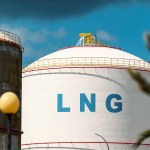France and the Netherlands were the top destinations for US LNG cargoes delivered in November, as shipments shifted toward Europe amid colder weather and ongoing concerns about winter supply risks, an S&P Global Commodity Insights analysis showed Dec. 3.
Four of the top five buying nations of US LNG during November were in Europe, plus Turkey, while the monthly share of US exports flowing to the region reached the highest level since April, about 56% of US cargoes. Only one of the top import countries during the month, India, was in the Asia-Pacific.
France and the Netherlands each received 11 US cargoes in November. The countries offer the option of sending regasified volumes to storage, using it internally, or moving them on to a higher hub market. They were followed by India, Turkey and the UK, which each received eight cargoes. The shipments to Turkey were the first US LNG cargoes delivered to the country since May.
The overall 110 cargoes delivered during the month represented a decline from October, when 114 were delivered. Europe, plus Turkey, received 62 US LNG cargoes in November, up from 46 the prior month. Countries in Asia-Pacific received 29 cargoes in November, down from 45 in October.
Even though arbitrage opportunities to Asia remained weak in November, low spot tanker rates continued to support the competitiveness of destination-flexible US volumes as a cost-effective supply option.
The shift in trade flows to Europe was supported by factors including colder weather drawing down storage inventories in Europe and a mild start to winter in Northeast Asia.
European gas inventories were around 85% full as of Dec. 1, according to the latest Aggregated Gas Storage Inventory data, reflecting a drawdown of more than 10% over November as a cold snap and supply concerns prompted withdrawals and higher gas prices. European storage levels dropped below 90% on Nov. 19, driving the Platts assessments for spot LNG cargoes into Northwest Europe to a year-high of $14.80/MMBtu on Nov. 21.
Delays in new liquefaction capacity coming online in the near term have also helped support prices in Europe, with market participants on edge about potential supply disruptions this winter and the anticipated end of Russia-Ukraine gas transit at the start of 2025.
Platts, part of S&P Global Commodity Insights, assessed DES Northwest Europe Marker for January at $14.739/MMBtu Dec. 3, up 3.7 cents on the day.
Across the Atlantic, Platts Gulf Coast Marker for US FOB cargoes loading 30-60 days forward was assessed at $14.28/MMBtu Dec. 3, up 6 cents on the day.
In the Pacific, Platts assessed the January JKM benchmark price for LNG cargoes delivered to Northeast Asia at $15.326/MMBtu on Dec. 3, down by 9.8 cents on the day.
Startup work is underway on two US LNG capacity additions — Venture Global’s Plaquemines LNG facility in Louisiana and a midscale expansion of Cheniere’s Corpus Christi LNG terminal in Texas – which could start producing LNG by the end of the year, according to the project developers.
Source: Platts





